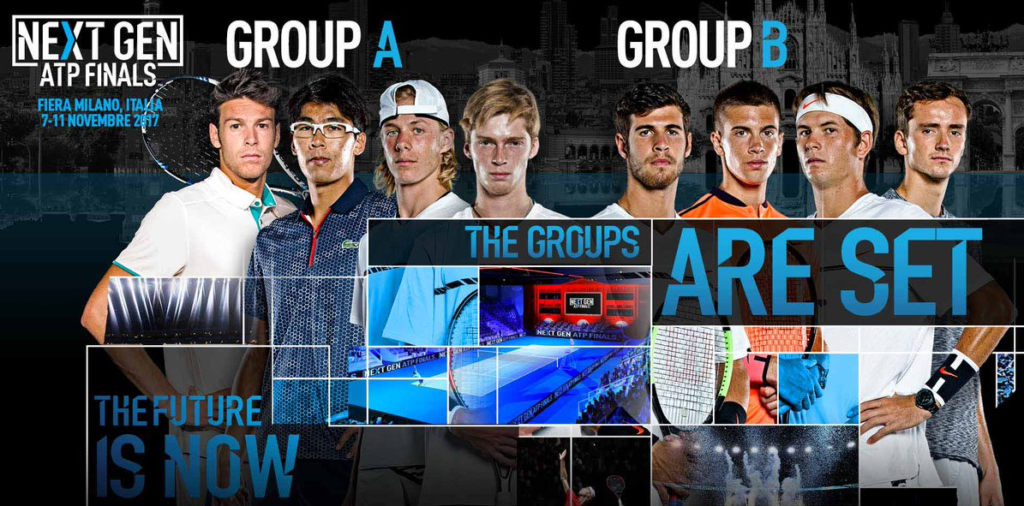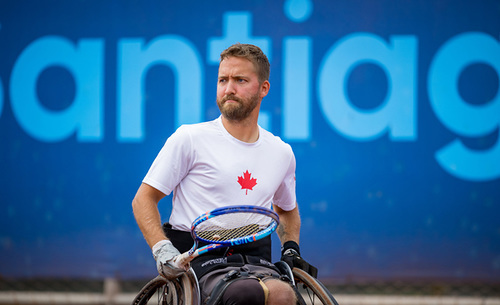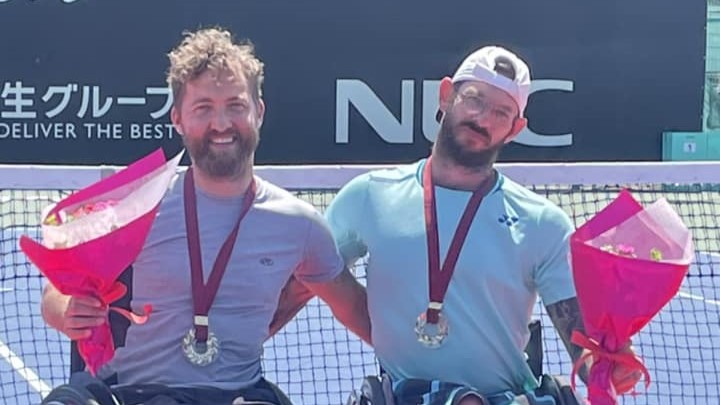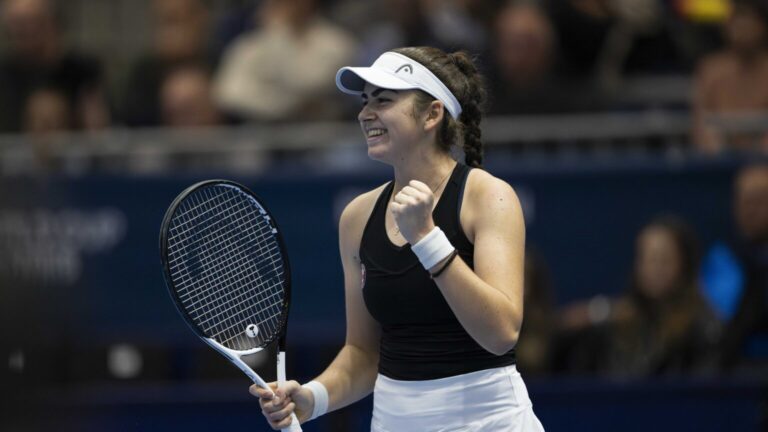
This week’s Next Gen ATP Finals in Milan features the best 21-and-under players of the 2017 season – with the obvious exception of Sascha Zverev. The 20-year-old German was easily No. 1 in the age category but chose to take a pass on the event to focus on next week’s ATP World Tour Finals in London.
Next Gen in Milan is as much about experimental rules as it is about the eight players involved. They are – divided into A and B groups – listed below with their rankings in brackets.
GROUP A GROUP B
Andrey Rublev (37) Karen Khachanov (45)
Denis Shapovalov (51) Borna Coric (48)
Hyeon Chung (54) Jared Donaldson (55)
Gianluigi Quinzi (306) Daniil Medvedev (65)
Quinzi is an Italian wild card who earned his spot through a qualifying event – defeating compatriot Filippo Baldi 3-4, 3-4, 4-2, 4-2, 4-2 in the final round. That unusual scoreline is indicative of the biggest change in tennis convention being introduced in Milan.

Here are changes with a comment about each of them:
SCORING: All matches will be best-of-five sets with the sets made up of just four games – and a 12-point tiebreak played at 3-all.
The ATP’s Chief Player Officer, Ross Hutchins, explained the scoring innovation. “We’re looking to create more meaningful moments throughout the course of a tennis match,” he said. “Normally you’d say break points, game points, latter stages of sets, tie-breaks would be more meaningful moments. So can we host more tie-breaks, more end-of-sets, more exciting moments, more clutch points?”
COMMENT: This is worth trying. With normal two-out-of-three sets, a player loses the first set and he’s immediately behind the eight ball and has to win the next two sets. Three-out-of-five – even if it’s just four-game sets – allows for more maneuver-ability, more chances for players to overcome a poor patches of play and still wind up with a win. It could ultimately be a way to have the better player be more likely to assert his superiority.
It seems a little strange that, with the accent on keeping things moving along faster, there’s a regular 12-point tiebreak instead of the abbreviated nine-point breaker.
NO-AD SCORING: Already used in doubles on the ATP tour, it’s the first player to win four points who wins the game. There will be no ‘deuce-advantage.’
COMMENT: Tennis fans are already accustomed to this in doubles and it’s not that revolutionary. Still ‘deuce-advantage’ has been such an integral part of tennis scoring for so long that it’s hard to see it vanishing anytime soon. But – never say never.
A twist in the Next Gen no-ad is that, unlike doubles where the receivers get to pick the side to receive on, in Milan it will be the server who gets to choose the side.
NO LETS: There will be no ‘let’ serves – if a serve lands in after touching the net, the receiver has to play it.
COMMENT: This was tried a few years ago on the Challenger Tour and Canadians Vasek Pospisil and Jesse Levine played trial tournaments using it. Neither seemed very comfortable with or disposed to the idea of no lets.
This is going to be the trickiest innovation to get used to for the players.
“I think the hardest thing is going to be the no lets,” Shapovalov said. “For the first couple of times I feel like I’m just going to stop the point and expect a re-serve.”
That will very likely be the case. But getting rid of lets would get rid of the frequent charade of players arguing with umpires about whether or not the ball tipped the top of the net. Very rarely does a serve touch the top of the net and then dribble over – resulting in a stone-cold winner. They usually come through almost as expected so what’s the big deal about having to play them? And, if the ball tips the net and sits up allowing the returner as easy shot, it’s the server’s fault for hitting the net in the first place.
NO LINES-PERSONS: All line calls will be made by the electronic line-calling Hawk-Eye system. There will be an umpire.
COMMENT: This is a tricky one to anticipate ahead of time. There’s a sense that the court will look pretty barren with no humans sitting on it at the ends of the various lines. Long-term it might save money by replacing the complements of lines-persons required at tournaments,
Foot faults will be called by an off-court official in touch with Hawk-Eye and cameras that will cover all the angles. To maintain a human element, a voice will say “out” when a shot is not good and “fault” when a serve misses. Hawk-Eye replays will be shown on all shots within 5 centimetres of the line and on other selected occasions to help keep fans more involved because there will no longer be player challenges to show on the video boards.
Without lines-persons, players are going to have problems not being able to vent – except for the umpire – their frustrations to a human.
Controversy and confrontations about line calls have always been part of the script of tennis matches. It may turn out to be too dull with no humans and only Hawk-Eye (and the umpire) as the ultimate arbiter.
START TIME: From the time the second player walks out at the beginning of a match, the players will have exactly five minutes to get settled at their chairs and complete the warm-up.
COMMENT: It’s hard to disagree with this with the all fidgeting some players – ahem… maybe a certain left-handed Spaniard – do before going out for the coin toss. A good idea – let’s get on with things!
SPECTATOR MOVEMENT: Members of the Next Gen crowd in Milan will be free to come and go at any time during the match except for those seated behind the court.
COMMENT: This isn’t a good idea. What if a person’s seat is on the side but close to the corner next to those seated behind the court? Movement there would be a distraction for players – so where do you make the cut-off for spectators seated on the sides?
Here’s a simple solution. Anyone 10 rows up on the side is free to move whenever they like – same goes for people more than 20 rows up on the ends. Players should be able to get used to spectators moving that far removed from their field of vision on the court. The average public park or club player manages with their fellow-players just metres away on adjacent courts – so why can’t the pros?
COACHING: Coaching during the Next Gen Finals will only be done via headsets at the end of sets. The coaches will not come onto the court.
COMMENT: There are now getting to be more different coaching possibilities – on court, verbally from courtside, using headsets etc. Most traditionalists don’t like coaching of any kind but at least using headsets is not intrusive. If coaching is ever institutionalized, maybe hand signals from courtside by coaches would be the least objectionable option.
COURTSIDE TIME-CLOCK: There are clocks in the corner of the court and on the scoreboard to count down the 25 seconds allowed between points.
COMMENT: A lot of tennis people seem to like this idea. But there could be problems such as spectators counting down out loud if a player is taking too long, which could escalate into bad situations. Essentially a good umpire should be able to properly enforce the time rule without a time-clock that’s visible for everyone.
ONLY ONE MEDICAL TIME-OUT: The players will only be allowed one medical time-out (MTO) during the match.
COMMENT: This seems a little harsh. If a player gets hurt once, maybe something fairly minor like a blister, and then suffers a much more consequential injury – does he then have to either continue or quit without any medical consultation?
ONLY A SINGLES COURT: All the matches at Next Gen will be played on a singles court without doubles lines.
COMMENT: Not a big deal. This has happened many times in the past – especially at year-end grand finales that didn’t have a doubles event. It provides a cleaner look so it can’t be a bad thing.
😊😜🙈#NextGenATP Finalists reveal their favourite emojis! pic.twitter.com/I4pDdJHenJ
— Next Gen ATP Finals (@nextgenfinals) November 6, 2017
The ATP Next Gen Finals in this inaugural edition may or may not be a good idea. While it gives exposure to an up-and-coming generation, it has drawbacks. There are no ranking points and everyone knows that ranking points are the coin of the realm in tennis. An event without them lacks legitimacy.
Also, it’s the end of the year and many players are just anxious to get to their off-season and a well-earned break. That can take something away from their motivation.
Here’s the Next Gen prize money breakdown:
Undefeated Champion: $390,000
Final Win: $225,000
Semifinal Win: $125,000
3rd Place Finish: $75,000
4th Place Finish: $50,000
Each Round Robin Match Win: $30,000
Participation Fee: $50,000
1st Alternate: $15,000
The alternate player in Milan is 19-year-old Stefanos Tsitsipas of Greece.
In Canada, the ATP Next Gen Finals will be carried on various TSN channels from Tuesday until the final on Saturday.
Schnyder Prominent at Tevlin Challenger

Patty Schnyder, the former world No. 7 (2005) was the main attraction at the $60,000 Tevlin Challenger held at Sobeys Stadium in Toronto last week.
The No. 160-ranked Swiss, who has an almost three-year-old daughter named Kim, made it to the final where she was beaten 7-6(3), 6-3 by No. 230-ranked Ysaline Bonaventure of Belgium.
Schnyder was not at her best suffering from flu-like symptoms but Bonaventure was a worthy winner. The 23-year-old Belgian is on her way back from eight months off the tour in 2016 after a wrist injury that required three surgeries.
The semifinal between Schnyder and Francesca Di Lorenzo of the U.S. was an entertaining affair won 6-4, 3-6, 6-3 by the 38-year-old Swiss. Di Lorenzo thought she had things going her way when she had a point for a 3-1 lead in the final set, only to have a Schnyder sideline shot, which the 20-year-old American saw as out, called in. It significantly changed the momentum.
After losing the first point of the final game of the match, a frustrated Di Lorenzo, a 20-year-old student at Ohio State University, could be heard saying to herself about the veteran Schnyder, “like she’s 80 years old.”

Bianca Andreescu, 17, of Mississauga, Ont. had the most success of the Canadians at the event – losing 6-4, 3-6, 6-3 to Bonaventure in the quarter-finals.
Rankings Bummers

Monday’s latest ATP rankings were a serious hit for two of Canada’s top players – Milos Raonic, in singles, and Daniel Nestor, in doubles. Both were defending semifinal (360) points at last week’s Masters 1000 event in Paris but were unable to play this year.
Once those points came off, Raonic dropped from No. 12 to No. 24 while Nestor tumbled from No. 40 to No. 56.
Even Denis Shapovalov had a bit of a disappointment this week. He fell from No. 49 to No. 51. It would have been nice – at least symbolically – if he could have remained No. 50 or higher. But it appears No. 51 is where he will be in the year-end rankings because none of the players immediately ahead of him has points to defend for the rest of 2017.
As for the women, the WTA has announced its final 2017 rankings and Genie Bouchard is No. 81 – a drop of 34 spots from No. 47 in 2016.
What’s That?
Merci @TennisCanada et aux gens du Saguenay pour la belle semaine👍🏼 Toujours bien de jouer à la maison😊 pic.twitter.com/ipuSL8bTwI
— Charlotte Robillard (@Charobillardmi) October 28, 2017
This is from two weeks ago after the Saguenay National Bank Challenger event. Current Canadian No. 8 – 18-year-old Charlotte Robillard-Millette of Blainville, Que. – included this dynamic picture of herself with her thank-you tweet to the tournament organizers.
Feature Picture: Next Gen ATP Finals


